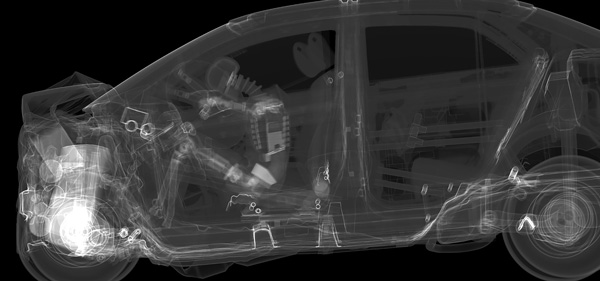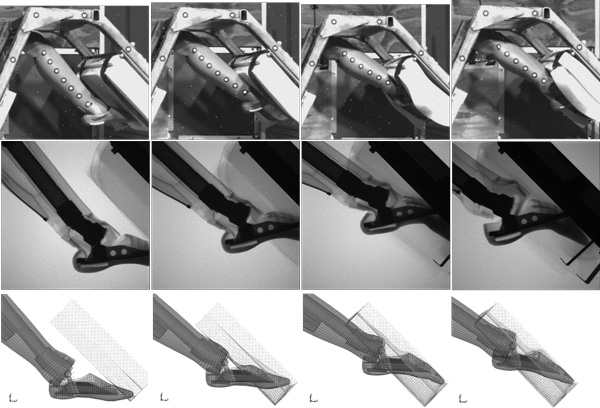

Using X-ray technology enables the obser-vation of the dynamic behavior of hidden vehicle structures under crash conditions. In addition to novel measurement technol- ogy, necessary algorithms for analysis and evaluation are developed within the scope of industrial and research projects.
Within the scope of industrial and research pro- jects, a novel measuring and evaluation method is currently developed at EMI, which enables the observation of the dynamic behavior of hidden vehicle structures during crash. This method helps to capture precious information for the validation and optimization of numerical crash simulations.
In cooperation with the Fraunhofer Development Center X-ray Technology EZRT, researchers of Fraunhofer EMI develop the hard- and software required for the application of the novel measuring and evaluation method. With regard to measure-ment technology, considerable progress has been made on the design of a specialized detector, which is optimized for very high energies and frame rates. For the analysis of the collected data, algorithms for the automated identification and tracking of vehicle features are devised. Computation of simulated X-ray images facilitates the optimization of the experimental test setup and allows for a comparison of the numerical crash simulation and the real- world experiment in X-ray images. Using methods from the field of data assimilation, 3D information, which is not contained in the 2D X-ray image, is augmented by incorporating information from the numerical crash simulation. This approach allows for a reconstruction of the crash behavior of the vehicle in the real-world experiment and a com-parison with the corresponding crash simulation. The project is accompanied by numerous generic load cases of varying complexity. In this context, the dynamics of a pivoted leg of a typical crash-test dummy was studied as it impacts on a foamed- plastic barrier at 30 g acceleration. In this example, the application of the novel measuring and evalua-tion method demonstrates the possibilities of a detailed analysis of the dynamic behavior, which is unfeasible using conventional observation methods such as high-speed cameras.